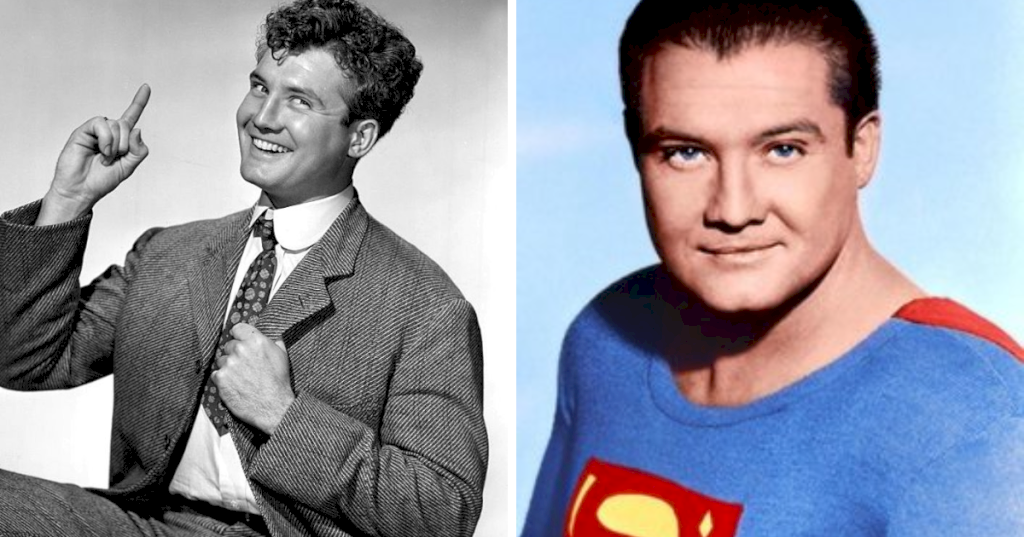
Young men listening to songs in a special listening booth. 1954.
Nowadays you can easily listen to new songs on your smartphone using your earphones, but this wasn’t the case in the past. Many music stores in the 1950s introduced special sound-isolating booths where customers could sample new sounds without having to wear headphones.
Back in the ’50s and ’60s, when low-cost 45-rpm vinyl singles were the most popular format for recorded music, thousands of independent mom-and-pop record stores across the country provided listening booths.
These little cubicles were equipped with turntables, headphones and sample singles for the convenience of customers choosing among a number of prospective purchases.
But the blossoming of the vinyl, which made scratched samples more expensive to replace, and the advent of record-store chains, which put customer service far below profits, led to the demise of the booths by the mid-’60s.
The first vinyl discs were made for playback at 33 1/3 rpm and pressed onto 12” diameter flexible plastic discs. These were a commercial flop due to consumer hesitance during the Great Depression and a lack of consumer playback equipment.

Customers in listening booths while standing up. 1958.
However, starting in 1939, Columbia Records continued to develop vinyl technology and In 1948, introduced the 12” Long Play (LP) 33 1/3 rpm microgroove record.
The cutthroat rivalry between RCA Victor and Columbia Records led to the introduction of another competing format by RCA, the 7”/45 rpm Extended Play (EP). The period where both of these formats fought for dominance from 1948-1950 was known as the “War of the Speeds.”
After a few years of duking it out, the 12”/33 1/3 rpm LP became the predominant format for albums, and the 7” record became the format of choice for singles.
EPs offered a similar playtime to the 78 rpm discs, and LPs provided up to 30 minutes of playtime per side. In the early 1960s, consumers caught onto stereo LPs, and conventional mono LPs stopped being manufactured by 1968.
The pictures collected here are taken from a HMV record store in London. In the 1950s, HMV introduced special sound-isolating booths where customers could listen to new songs without having to wear headphones.
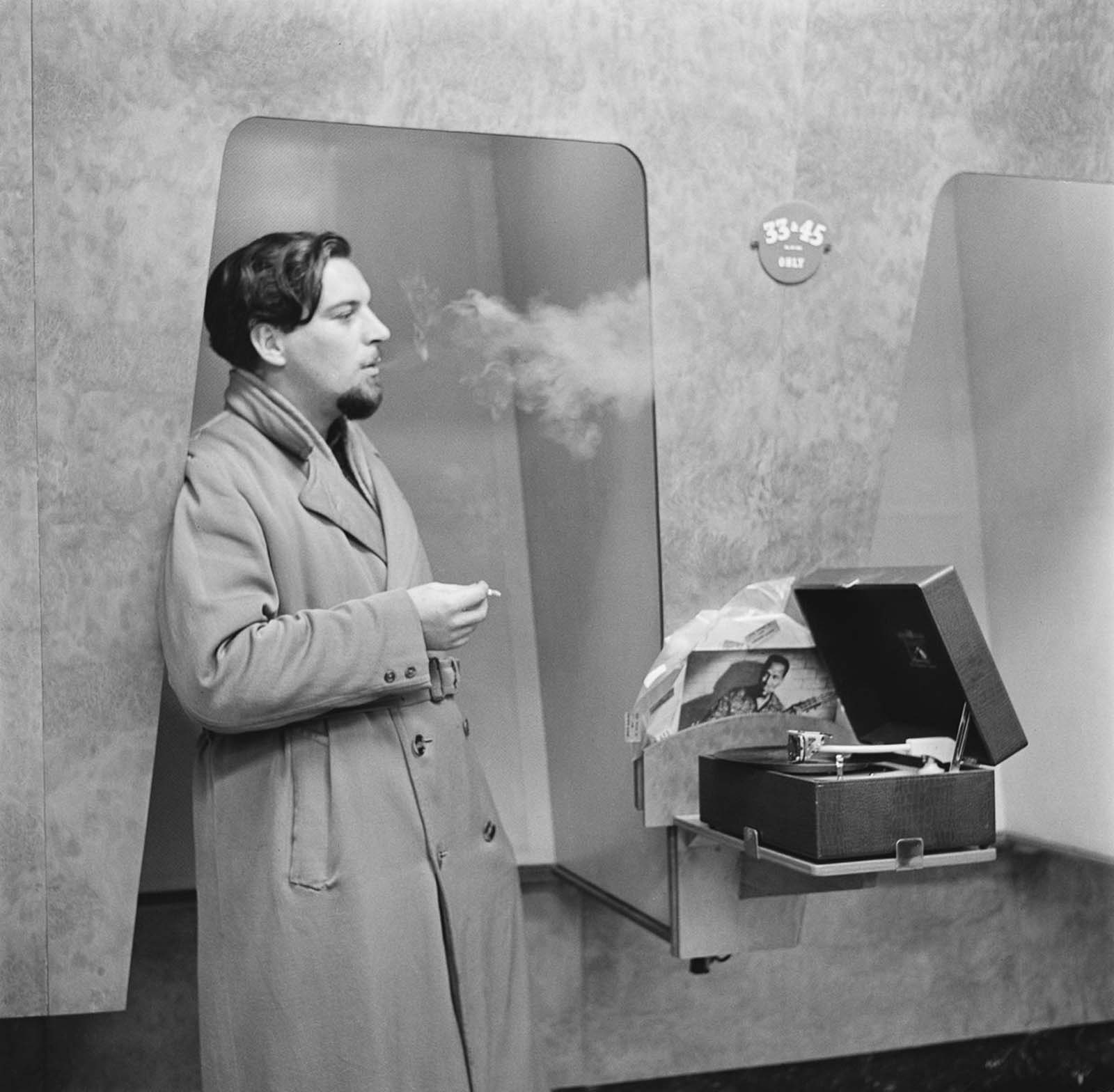
Obviously, smoking was allowed. 1955.

A group of friend enjoying music in a listening booth. 1955.
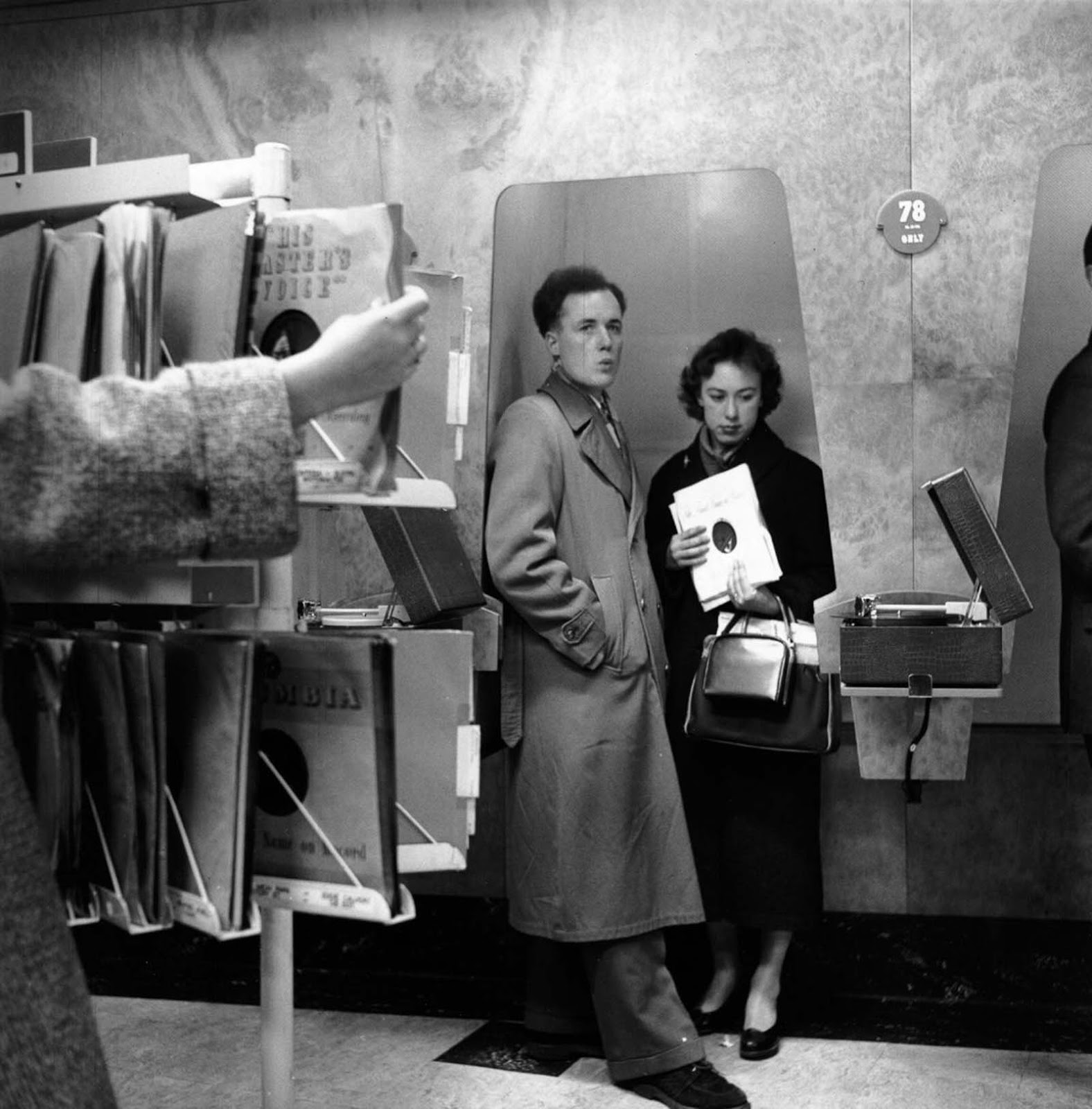
Picking up a vinyl record. 1955.

Two neighboring booths. 1955.
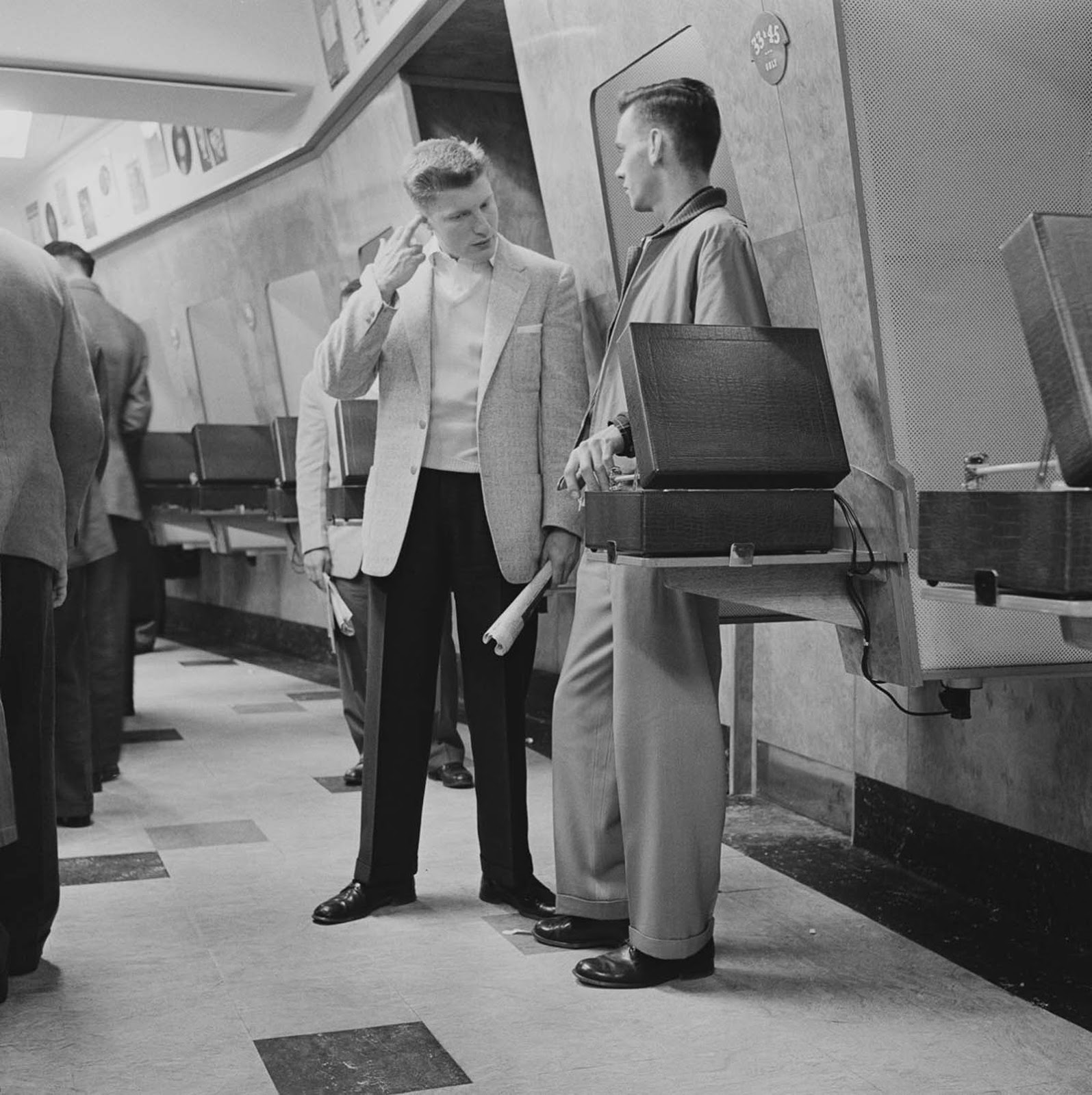
People dressed up pretty nicely back then.

An HMV store on Oxford Street in London. 1939.
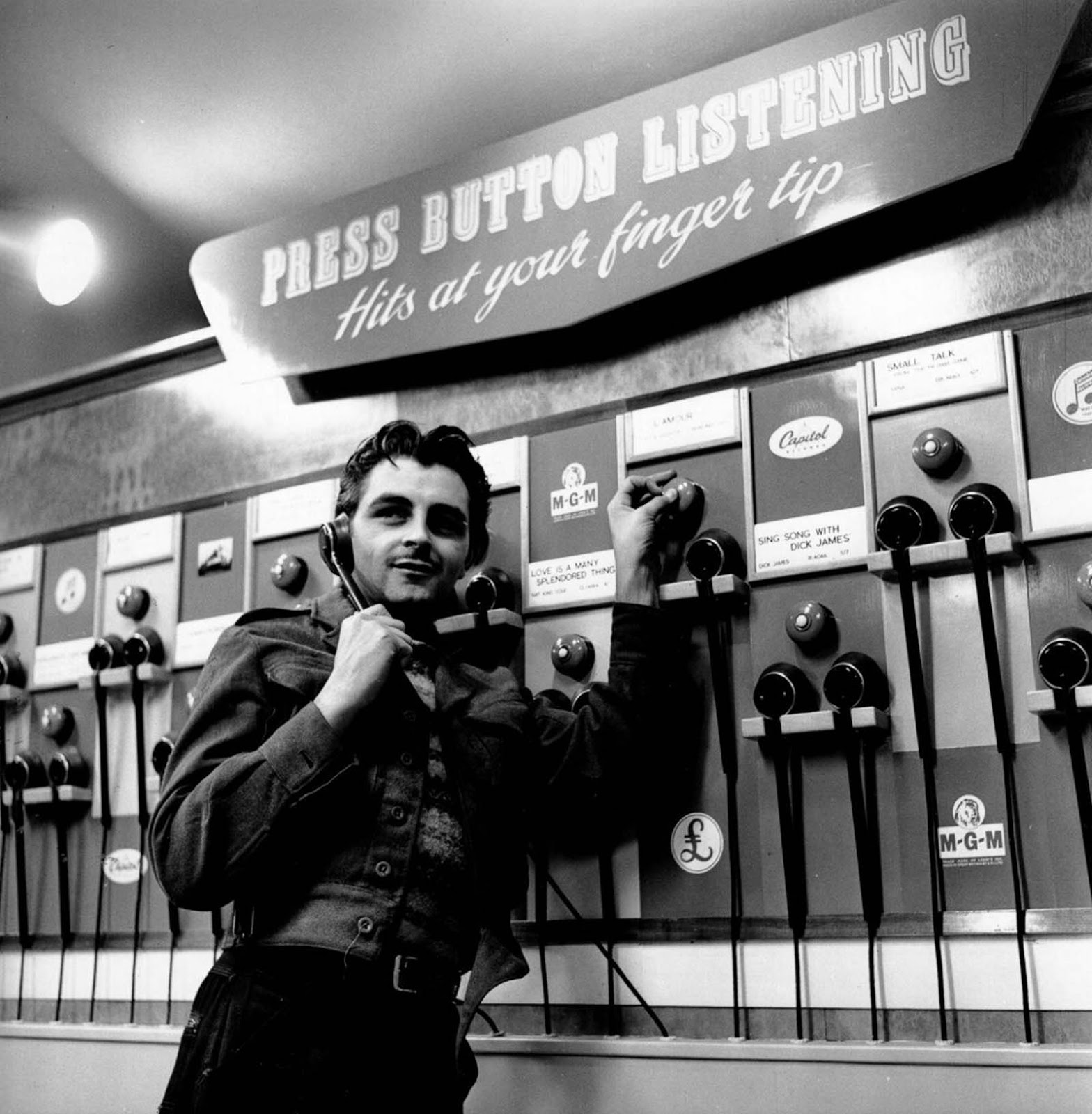
This was another way to listen to new songs. 1955.
(Photo credit: John Drysdale / Keystone Features / Hulton Archive / Getty Images).

